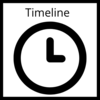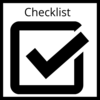According to your start and end dates ( 2024-05-08 to 2024-05-19 ),
you have 11 days to finish your assignment.

Your steps
Click on the steps to expand or collapse. Expand All Steps (+)Step 1: Get started
Complete by Thu May 09, 2024
Percent time spent on this step: 10%
A. Understand your assignment
Determine what the assignment is asking you to do. Read the assignment carefully to determine the topic, purpose, audience, format, and length. Some reflection assignments provide students with specific questions and organization requirements, while others may be more open-ended, requiring you to determine a specific focus and organization.
For more information, see Understand your assignment.
B. Narrow your topic
A reflection assignment can cover a broad topic area (e.g., an entire course or section of a course). To manage the task better, narrow the focus of your reflection to a specific issue or topic (e.g., in a broad course on climate change, a narrowed topic might be effects of agriculture on soil water retention).
For additional help, see Develop and narrow a research topic (PDF).
Step 2: Reflect
Complete by Sun May 12, 2024
Percent time spent on this step: 30%
Critical reflection happens in two stages:
Stage 1: Analyze. Consider your chosen topic/issue by asking questions about your
role in a particular event or your stance on a particular issue. Free writing is a good
strategy at this stage. You can also use
guided reflection models to help you think critically.
Stage 2: Articulate. Use this analysis to develop a clear argument about what you've
learned. Organize your ideas so they are clear for your reader.
The Critical reflection resource describes these stages in greater detail.
Step3: Organize
Complete by Tue May 14, 2024
Percent time spent on this step: 15%
A. Develop a thesis statement
The reflection and brainstorming that you complete in Step 2 should lead you to some conclusions about your experience. Your thesis statement should summarize these in a sentence or two. Check out Thesis statements for additional help.
B. Outline the structure of your paper
Although a reflection essay can be organized in a variety of ways, often it follows a structure similar to a research essay, with an introduction, thesis, body paragraphs that support the thesis, and a conclusion. The Critical reflection resource gives additional information about one way to develop each paragraph of a reflection.
C. Organize relevant course or other material
As you present an argument about your learning and growth, you’ll have to connect this argument to concepts and issues discussed in class. At this time, it’s helpful to gather and organize course materials or other research for your analysis. You can use these materials as you write your first draft.
Step 4: Write the first draft
Complete by Thu May 16, 2024
Percent time spent on this step: 25%
Time to get writing! A first draft is a preliminary attempt to get ideas down on paper. It’s okay if your ideas are not yet complete. Let go of perfection and write quickly. You can add, take out, and revise later.
For additional help, check out Writing a first draft.
Step 5: Revise and proofread
Complete by Sun May 19, 2024
Percent time spent on this step: 20%
A. Evaluate your first draft
Determine any gaps in your draft. Do you have enough evidence to support your arguments? If not, you can find further insights by looking back on your course materials, free writing, and guided reflection from Step 2.
B. Revise your draft
Print out your paper and work from a hard copy. Read it carefully and look for higher order problems first, such as organization, structure, evidence, and analysis. For more help, check out tips for revision.
C. Evaluate your second draft and rewrite as needed
Narrow your focus to paragraph-level issues, such as sentence flow and transitions. To improve these issues, see Transition words.
D. Proofread and put your paper in final format
Last step! Read carefully to catch all those small errors. For editing tips, read Proofreading strategies. Also, take time to make sure your paper adheres to the conventions of the style guide you're using. Think about titles, margins, page numbers, reference lists, and citations.
Go to the Writing and Communication Centre Resources page for more help on revising, polishing, and proofreading.

